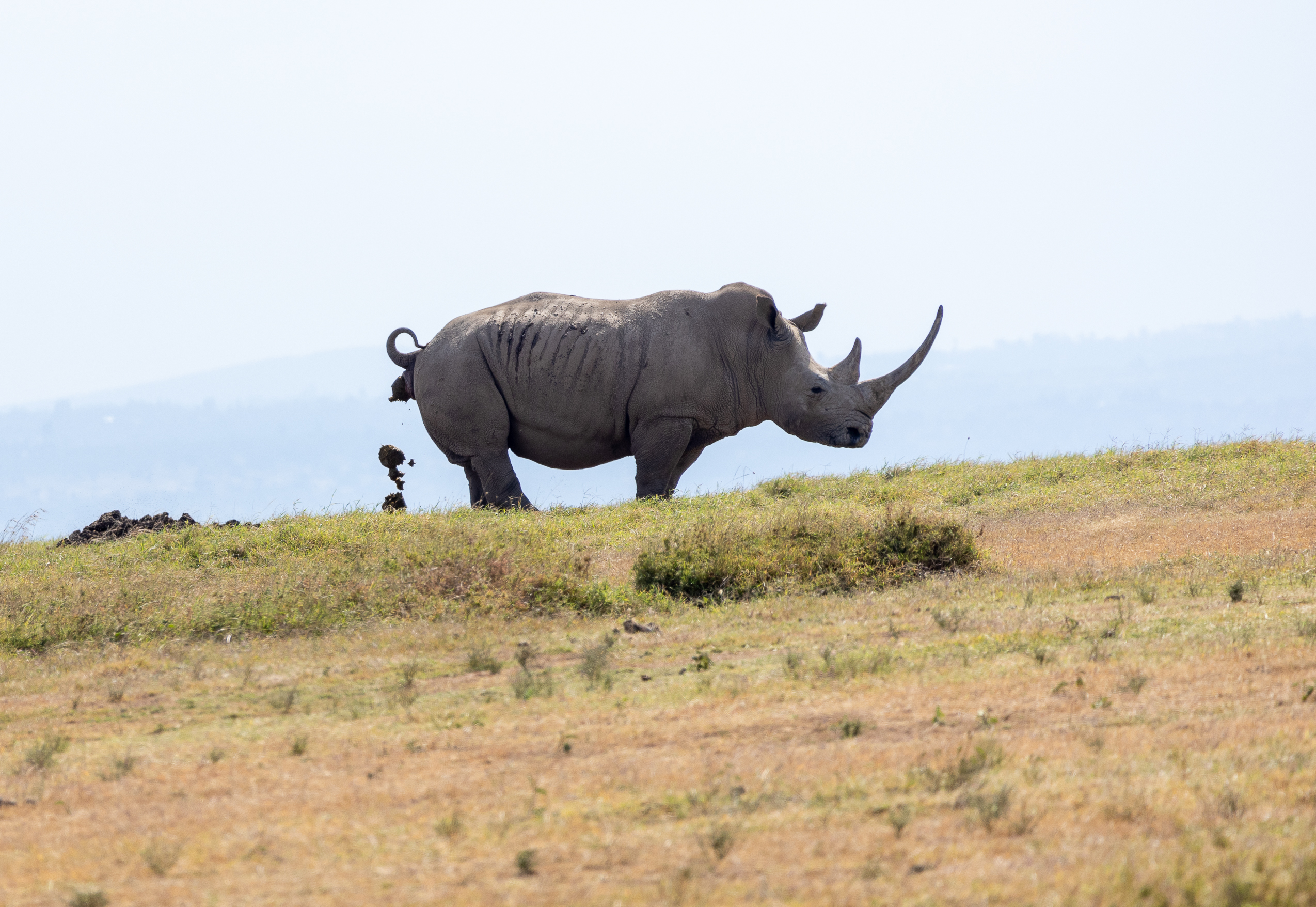
World Toilet Day 2024: Uncovering Rhino Restroom Secrets!

Kenya’s safari game drives are nothing short of exhilarating.
They offer the rare chance to encounter the Big Five: lion, leopard, rhino, elephant, and Cape buffalo, all in one visit to a national park, reserve, or community conservancy.
Each member of this iconic group is a marvel, though some are more elusive than others.
Take the leopard, for instance, a creature so stealthy it seems to vanish into the shadows.
Similarly, the Eastern black rhino, a species endemic to Kenya, often hides in plain sight.
While the leopard’s mystery lies in its slow and stealthy nature, the rhino leaves behind a curious calling card: neat piles of dung, resembling farm-ready manure heaps.
These peculiar “restrooms” are not just signs of rhino presence but keys to understanding their behaviour.
Intrigued by this phenomenon, I set out to unravel the mystery behind these dung piles on World Toilet Day.
To find answers, I turned to Geoffrey Chege, the Rhino Programme Coordinator at the World Wide Fund for Nature – Kenya (WWF-Kenya). I asked the question you’ve likely never pondered:
“Where do rhinos go to the toilet?”
With a chuckle, Chege revealed, “Rhinos have impeccable toilet etiquette. When you’re on a game drive, you might see heaps and heaps of rhino dung and think someone intentionally arranged them, but no. Rhinos instinctively return to specific spots, creating these piles, which we call dung middens.”
Rhinos, both black and white, don’t use random spots to relieve themselves. Instead, they establish communal latrines.
Chege explained, “In Kenya, we have two species of rhinos, the black and the white rhino, and both behave similarly. They designate specific toilets and the science behind this behaviour is fascinating. For males, when they revisit a midden or dung pile, they scatter the dung with their hind legs, spreading their scent across their range to mark territory. For females, dung serves a different purpose. When they’re in estrus, their dung carries chemical cues, helping males track them and increasing mating opportunities.”

Interestingly, this meticulous “toilet etiquette” doesn’t extend to urination.
“When it comes to urine,” Chege shared with a smile, “sometimes they go anywhere. But for the ‘long call,’ they return to the midden. The long call combines urination with dung deposition, creating a powerful olfactory signal that reinforces their presence.”
This distinction highlights the complexity of rhino communication.
Middens serve not just as territorial markers but also as tools for researchers.
“Dung is an invaluable resource for conservationists,” Chege said.

“By analyzing it, we can learn about a rhino’s diet, health, and even stress levels.”
Understanding these behaviours is crucial for conservation. The Eastern black rhino remains critically endangered due to poaching and habitat loss.
Today, their survival depends on robust conservation initiatives, including security measures, habitat protection, movement monitoring, and public education about their unique traits.
As the world celebrates World Toilet Day, it’s worth recognizing the vital role these natural “toilets” play in rhino communication and survival.
So, the next time you’re on a safari and spot a dung pile, take a moment to appreciate the hidden messages within, it’s nature’s own code of survival, written in dung.
